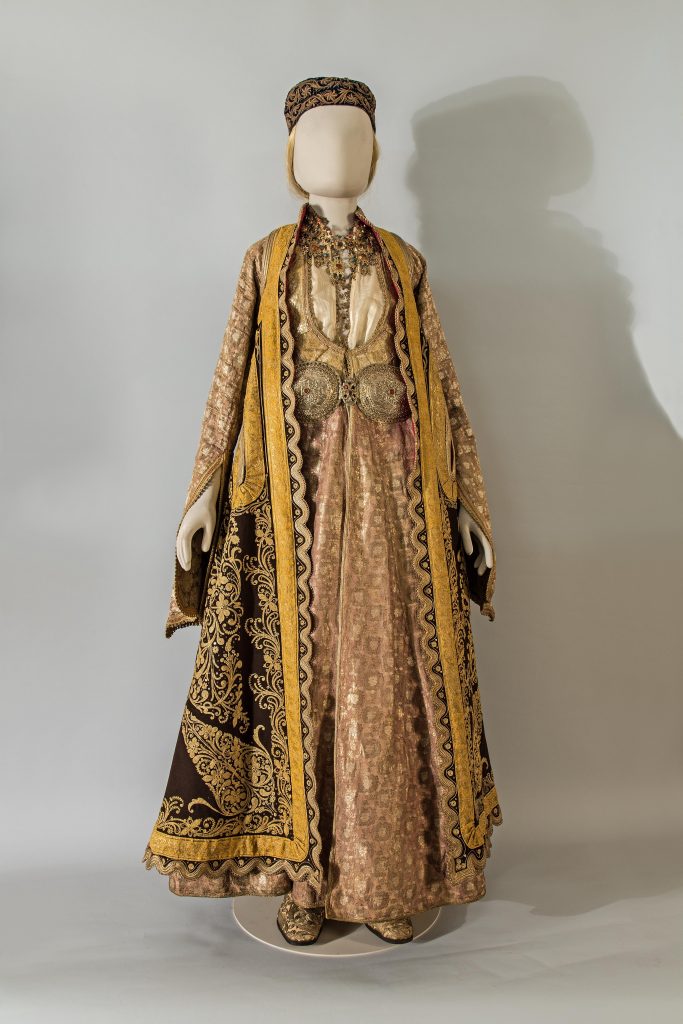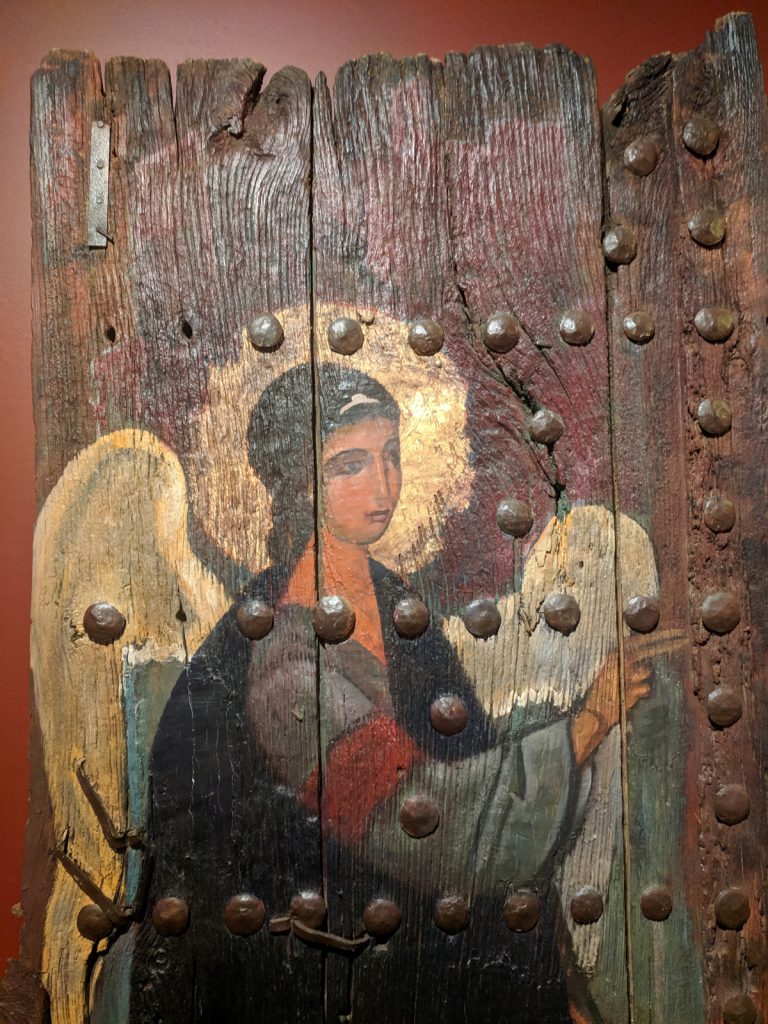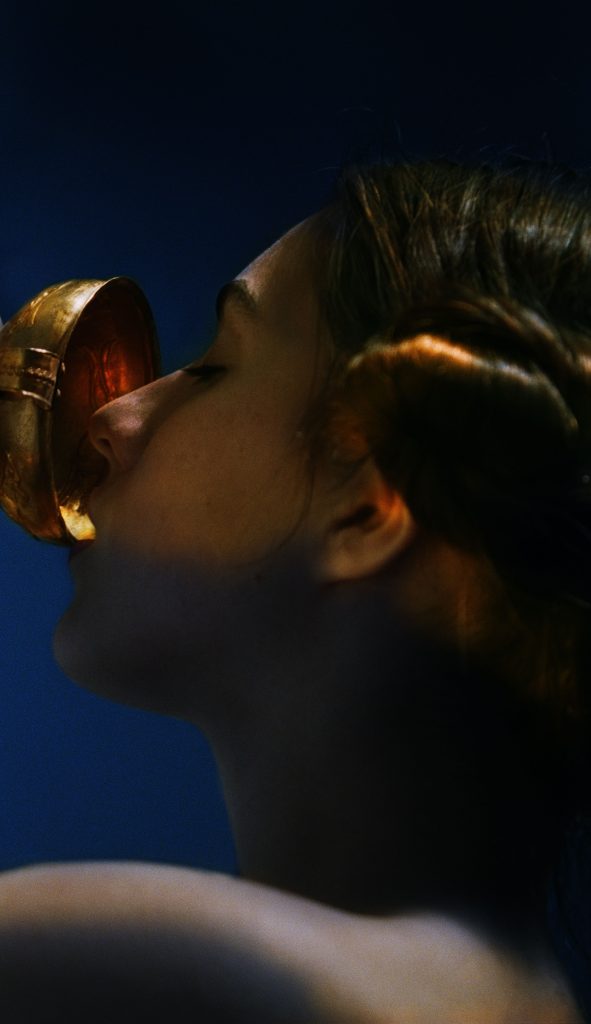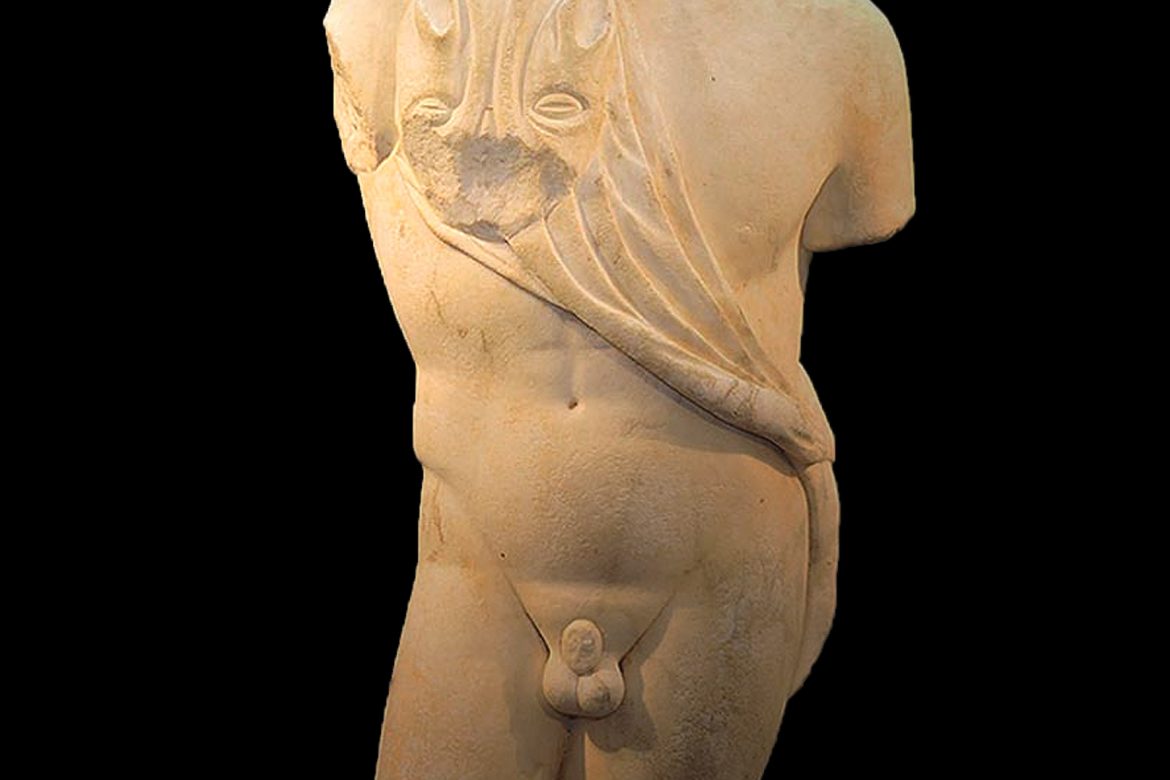Costume from Epirus

Every costume on display at the Hellenic Museum gives us a beautiful visual insight into the unique and rich costumes from around Greece, but the festive costume from Epirus stands out to me.
The costume consists of a silk brocade dress in a delicate pink colour with a woollen overcoat that has been richly embroidered in gold thread. The costume also includes an embroidered hat, gold silk shoes and finely made belt and necklace, both of which contain precious gems. Beyond the superficial beauty of the costume, what stands out is the attention and care that was taken in constructing such intricate garments.
It is an intimate look into the personal items a woman would have worn and, displayed on the mannequin, gives the outfit a proper silhouette and a certain breath of life. It also gives us a closer look at what Greek people valued, how they displayed their wealth and the types of occasions that were most important to them.
Satyr of Praxiteles
In spite of the lack of surviving Classical Greek sculpture, we are fortunate that the Romans loved Greek sculpture enough to make copies of both marble and bronze originals.
The Satyr of Praxiteles, which sits on the first floor of our mezzanine, is one such example. The details of the sculpture are still visible, from the chisel marks to scuffing from age, and the smooth and soft contours of the torso are a testament to the artist’s talent. Although only the torso remains, much like the Aphrodite of Milos, it is its missing elements that make this piece all the more striking and memorable.
Wooden Byzantine door

Hanging in one of the upstairs galleries, a large, handcrafted piece of wood that once served as a door houses a beautifully painted angel on its surface. The raw and rough wood is in stark contrast to the clean lines and rich colour of the painting which features the typical reds, blues, greens and golds of the art from the Byzantine Empire. The mixture of the retouched areas with those that are weathered, highlights both its antiquity and persisting relevance in the modern day.
Its juxtaposition with the more contemporary polished portraits in the room, gives us the opportunity to connect with a physical piece of the past that served a dual practical and religious purpose we may recognise from our own lives.
Oneroi – image of girl drinking from goblet (portrait version)

It is difficult to pick just one image from the Oneroi exhibition, but the photograph of the girl drinking from the Mycenaean kylix decorated with running hounds in flight is particularly striking.
Bill Henson’s masterful work manages to capture the beauty and quality of this 3400-year-old drinking vessel that otherwise rests in a glass cabinet.
The kylix is both emphasised and understated in the photograph’s composition; it blends the modern with the ancient and allows the viewer to vicariously experience Greece’s ancient treasures, while also bridging together two artists separated by three millennia.



